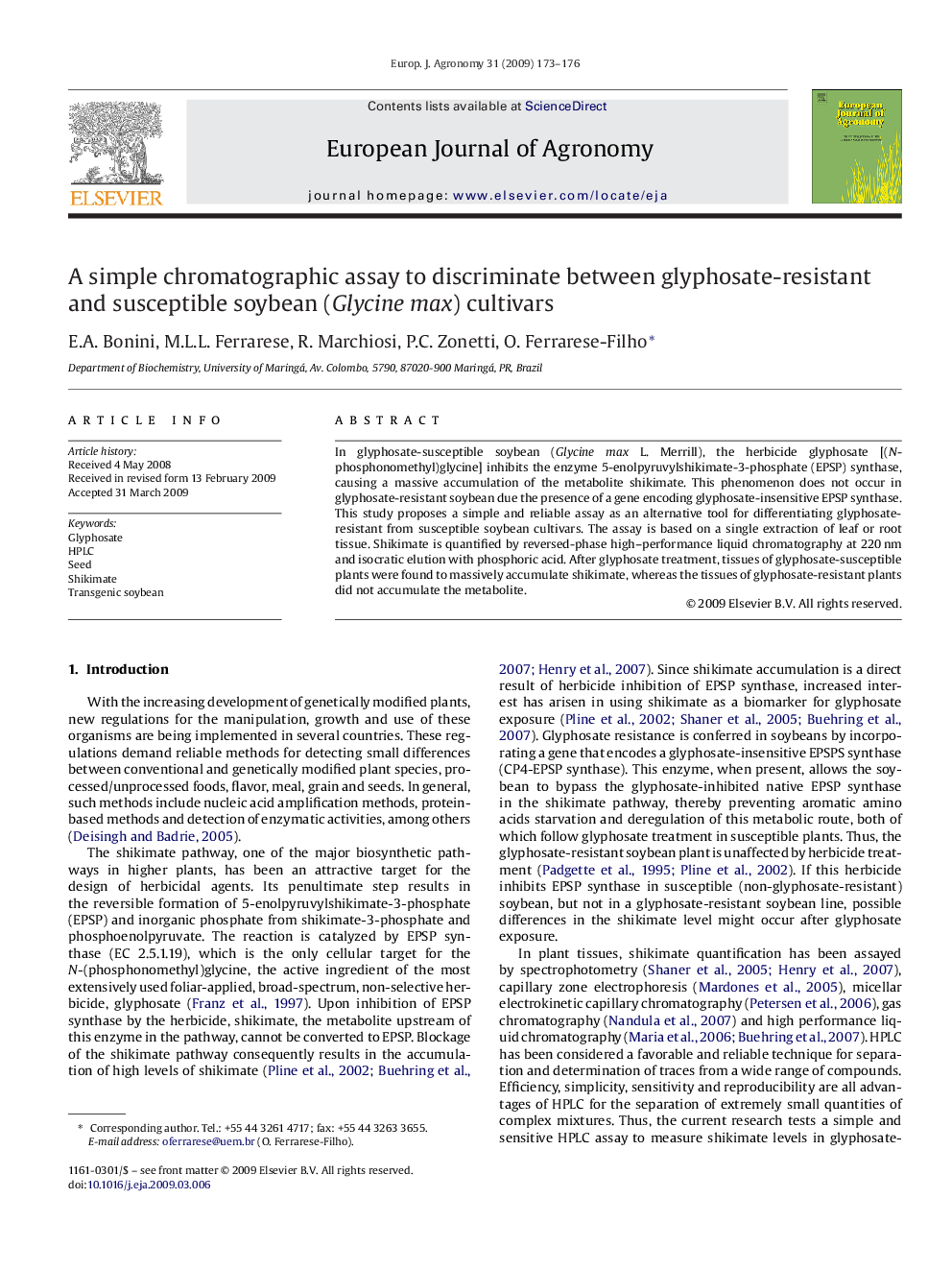| Article ID | Journal | Published Year | Pages | File Type |
|---|---|---|---|---|
| 4509392 | European Journal of Agronomy | 2009 | 4 Pages |
In glyphosate-susceptible soybean (Glycine max L. Merrill), the herbicide glyphosate [(N-phosphonomethyl)glycine] inhibits the enzyme 5-enolpyruvylshikimate-3-phosphate (EPSP) synthase, causing a massive accumulation of the metabolite shikimate. This phenomenon does not occur in glyphosate-resistant soybean due the presence of a gene encoding glyphosate-insensitive EPSP synthase. This study proposes a simple and reliable assay as an alternative tool for differentiating glyphosate-resistant from susceptible soybean cultivars. The assay is based on a single extraction of leaf or root tissue. Shikimate is quantified by reversed-phase high–performance liquid chromatography at 220 nm and isocratic elution with phosphoric acid. After glyphosate treatment, tissues of glyphosate-susceptible plants were found to massively accumulate shikimate, whereas the tissues of glyphosate-resistant plants did not accumulate the metabolite.
